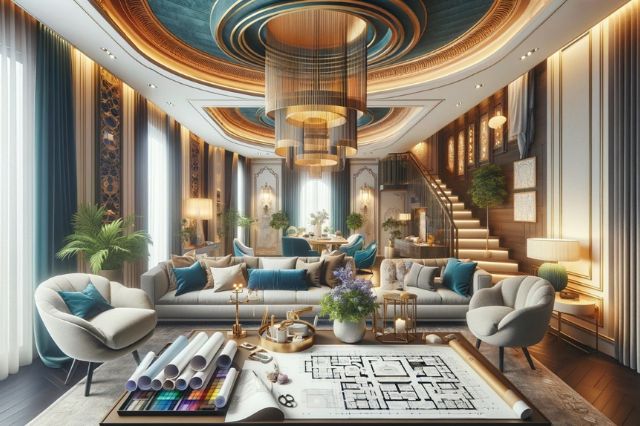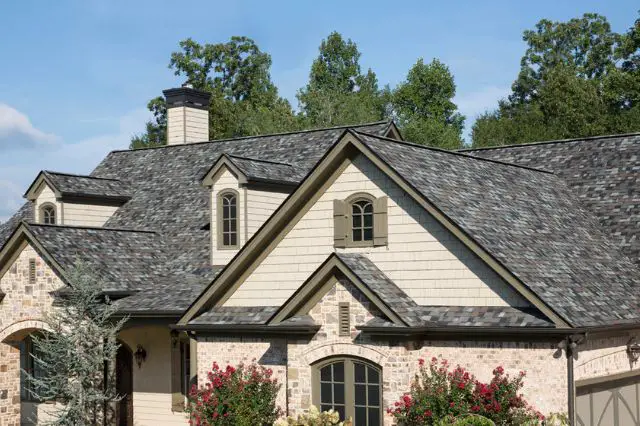Home Improvement
Incentives and Solar Feed-in tariffs offered in Queensland


Queensland is the second-largest and third-most populated state in Australia. The capital of the state, Brisbane, is a sunny city with plenty of glimmering surfing beaches.
The state receives plenty of sun around the year, making it an excellent location for residents to install solar energy systems. In such weather, solar systems work effectively in a domestic setup.
Installing a solar system enables you to save money on power bills. In addition, you can make money by sending extra electricity back to the grid and earning a feed-in tariff.
There are a variety of electricity retailers in QLD, so the tariffs often vary. The solar feed in tariff QLD ranges from 7 to 18 cents per kWh, depending on the area and your electricity provider.
Other than the benefits of earning money through feed-in tariffs, the government also offers an incentive program. The incentive program helps eligible homeowners reduce the overall net cost of their solar energy systems.
Solar Incentives offered in Queensland in 2021
In Queensland, there is an incentive offered to homeowners under the Small-scale Renewable Energy Scheme, also known as SRES. Under this scheme, individuals and small businesses can install eligible solar systems and other renewable forms of energy.
The scheme mandates the creation of Small Scale Technology certificates, commonly known as STCs which renewable energy companies have a legal obligation to buy from individuals. Then renewable energy companies have to surrender these STCs to the Clean Energy Regulator in their state every two to three months.
As per the SRES scheme, projects with a maximum power output of 100Kw are eligible for incentives. If you acquire the solar energy systems for a recognised installer, you would be awarded STC for every 1000 kWh of the total expected energy estimation between 2021 and 2030.
For instance, if you live in Brisbane, QLD, and have a system of 6Kw, you will earn 82 STC for 2021 and 2030.
You can then sell these STCs to electricity providers as they are legally obliged to purchase them from individuals. In Queensland, you can get up to $38 for each STC.
So, a 6Kw system will receive an incentive of $3,116, reducing your net costs by almost 30%.
Whereas, in some inland regions of QLD where weather conditions are more favourable, one can qualify for more STCs owing to greater power output.
For the same system of 6Kw in Mount Isa, you can receive 92 STCs. This increases your incentive to $3,496.
Queensland Solar Power Feed-In Tariff
The solar feed-in tariff in QLD varies from region to region. But on average, it is 7.8 cents/Kwh.
There are no regulations on minimum or maximum FiT amounts. Some providers may not even offer a cent, whereas others might offer up to 18 cents/ kWh.
For instance, most family homes opt for a 6KW solar energy system that can produce approximately 8,400KwH, but if your consumption is only 6000KwH, you can send the remaining power to the grid. Assuming the average FiT in QLD, your annual feed-in earnings would come up to $200.
So, with an average saving of $1500 on power bills and an additional $200 of the feed-in tariff, you can easily save at least $1600 to $2000 depending on the usage and tariffs in your local area.
The incentive and feed-in tariffs make it easier for homeowners to install solar energy systems in Queensland. But there are stringent rules set up by the authorities for a person to be eligible for such incentives.
To be eligible, you must only get the system installed from companies accredited by the Clean Energy Council (CEC). Moreover, all the components of the energy system must be approved by the CEC.


Home Improvement
What Makes Dubai’s Interior Design Companies Stand Out Globally?


Dubai’s interior design industry is a vibrant and dynamic sector, known for its innovative approach and luxurious designs. As a global hub for architecture and design, Dubai has emerged as a trendsetter in the interior design world.
This article explores the various factors that contribute to the distinctiveness and global recognition of Dubai’s interior design companies like 4Space Dubai.
Fusion of Cultural Aesthetics and Modern Design
Blending Traditional and Contemporary
In Dubai, the merging of cultural aesthetics with contemporary design is not just a trend; it’s an art form. Interior designers in Dubai have mastered the art of combining traditional Middle Eastern elements with modern design principles.
This blend results in spaces that are both culturally rich and contemporarily vibrant. An example of this is the way traditional Arabesque patterns are seamlessly integrated into modern minimalist settings, creating a unique and appealing juxtaposition.
Diverse Cultural Influences
The cosmopolitan nature of Dubai means that its interior designers are constantly exposed to a variety of cultural influences. This exposure is reflected in their work, where one might find Asian-inspired motifs alongside European-style minimalism. The result is a diverse and eclectic mix that appeals to a global audience.
Innovation and Use of Cutting-edge Technology
Pioneering Technological Integration
Dubai’s interior design scene is at the forefront of integrating technology into their projects. From virtual reality (VR) walkthroughs that allow clients to ‘experience’ a space before it’s built, to the use of advanced software for precision in design, technology is an integral part of the design process.
This adoption of technology not only improves the accuracy of designs but also enhances the creative possibilities.
Sustainable Innovations
Another aspect of innovation in Dubai’s interior design is the focus on sustainability. Designers are increasingly using eco-friendly materials and incorporating energy-saving features into their projects. This commitment to sustainability is not just about following global trends, but also about contributing to a healthier environment.
Luxurious and Opulent Styles
The Glamour of Luxury
Dubai is synonymous with luxury, and its interior design industry is no exception. Dubai’s designers have an eye for glamour, often using luxurious materials like marble, gold leaf, and rich fabrics. The interiors are designed to exude opulence and elegance, making a clear statement of luxury.
Attention to Detail
The level of detail in Dubai’s interior design projects is remarkable. From custom-made furniture to handcrafted decorative elements, everything is carefully considered to create a harmonious and luxurious space. This meticulous attention to detail is what sets Dubai’s designers apart, giving each project a bespoke and exclusive feel.
Emphasis on Sustainability and Eco-friendliness
Pioneering Eco-Friendly Design
The embrace of sustainability marks a significant shift in the interior design philosophy in Dubai. More than a trend, it’s a commitment to eco-consciousness that resonates with the global shift towards environmental responsibility.
Designers are adopting innovative approaches, using recycled materials, and focusing on energy efficiency to create spaces that are not only aesthetically pleasing but also environmentally friendly.
Integrating Green Spaces
Another aspect of this eco-friendly approach is the integration of green spaces within interior designs. Whether it’s the incorporation of indoor gardens or the use of plant-based materials, there’s a conscious effort to bring nature into the urban landscape.
This not only enhances the visual appeal of spaces but also contributes to the well-being of inhabitants, a principle that’s becoming increasingly important in interior design.
Tailored Experiences and Client-Centric Approach
Bespoke Design Solutions
In Dubai, interior design is not a one-size-fits-all solution. Designers give utmost importance to understanding the unique needs and preferences of each client. This client-centric approach results in tailored experiences where every design element is customized to suit individual tastes and lifestyles.
The Personal Touch
The process of creating these personalized spaces often involves close collaboration between designers and clients. This can range from selecting fabrics to adjusting layouts, ensuring that the final design not only looks exceptional but also resonates personally with the client.
It’s this personal touch that makes Dubai’s interior design stand out, providing an experience that’s as exclusive as it is comprehensive.
Global Recognition and Awards
Accolades on the World Stage
Dubai’s interior design firms have not gone unnoticed on the global stage. They have garnered international acclaim and numerous awards, highlighting their creativity, innovation, and excellence in design. These accolades are a testament to the quality and ingenuity of Dubai’s interior design community.
Setting Global Trends
Through these recognitions, Dubai is not just participating in the global interior design conversation; it’s leading it. The city’s design companies are setting trends and standards that are influencing the industry worldwide. Their impact extends far beyond the borders of the UAE, shaping the future of interior design globally.
Dubai’s journey in interior design reflects its broader aspirations – a blend of tradition with modernity, a commitment to sustainability, and a relentless pursuit of luxury and excellence.
As we look to the future, it’s clear that Dubai’s interior design companies will continue to be influential players on the world stage, shaping not just spaces, but also the very trends and principles that define contemporary interior design.
Home Improvement
How Can I Find a Skilled Interior Designer Specializing in Luxury Villa Projects?


To locate an experienced interior designer with a focus on luxury villa projects, one must use a combination of strategy, networking, and research. These designers create environments that go beyond conventional beauty and practicality; they are the architects of mood.
Here’s a detailed guide to finding a Luxury Villa Interior Design specialist who can turn your opulent property into a design masterpiece.
Recognising the Need for Expertise
Projects involving luxury villas are intricate and need a certain skill set in the designer. A designer who focuses on luxury residential buildings would possess an intricate knowledge of custom furnishings, high-end materials, and the nuances of lavish settings. They have experience in project management and client interactions in addition to design.
Research
Start by looking at interior designers who have luxury villas in their portfolio. Search for published work in books, periodicals, and websites devoted to interior design. A designer’s style, approach to managing difficult projects, and design philosophy may all be discerned from their portfolio.
Making the Most of Professional Networks
Referrals and word-of-mouth are quite significant. Speak with experts in the fields of architecture, design, and real estate. They may offer recommendations for reliable interior designers who have experience working with opulent homes.
Taking in Design Exhibitions
Showcases, exhibits, and design events are excellent places to find talent. Come to these kinds of events to get to know designers, see their work up close, and strike up a discussion. It’s a chance to assess the public’s reaction to their work and observe it in a real-world setting.
Assessing Online Reputation and Reviews
A well-known interior designer most often has a robust online presence, which includes listings on design platforms, social media accounts, and a website. Examine their web exhibits and peruse customer endorsements. Online ratings and reviews may also shed light on a company’s credibility and reputation.
Examining the Design Process in Depth
It is essential to comprehend the process of a designer. A customised approach is necessary for luxury villas, so seek designers that are prepared to customise their workflow to meet your requirements and provide individualised consultations. They must have the capacity to hear you out, understand you, and turn your ideas into reality.
Taking Compatibility and Communication into Account
It is impossible to overstate the value of effective communication. The designer ought to be someone you can get along with. For the designer to understand your thoughts and be able to provide recommendations that suit your preferences and standards, compatibility is essential.
Evaluation of Project Management Proficiency
A competent project manager is an essential ability for an interior designer. They should have the capacity to supervise projects from inception to conclusion, handling budgets and schedules as well as liaising with suppliers and contractors.
Ensuring Innovation and Sustainability
A competent designer must be aware of the latest developments in sustainability and be versed in eco-friendly methods and materials. Their capacity for innovation and integration of smart home technologies may also serve as a barometer of their flexibility in response to changing needs.
Confirming Experience and Credentials
Verify the designer’s credentials to make sure they possess the necessary training and authorization. Given that luxury projects frequently entail fine details and premium materials, experience managing these kinds of projects is crucial.
Talking about Plans and Budgets
Talk openly about expectations, service costs, and budgets before committing. A good designer should be open and honest about prices and able to provide outstanding design solutions while staying within your budget.
When selecting an interior designer for your opulent home, give special consideration to those who possess a unique combination of artistic vision, a high level of technical proficiency, and immaculate taste. A cooperatively designed place that epitomises elegance and comfort is the result, but the process demands judgment and patience.
By taking these simple steps, you’ll be well on your way to finding an interior designer who not only understands your vision for an opulent living area but also possesses the knowledge and expertise necessary to execute it with style and grace.
Home Improvement
What Are the Most Common Roof Types?


It’s essential to ensure the endurance of your roof for the safety of your family members and yours.
If you are building a new home or need roof repair services, it’s a smart move to explore the roof types available in the market before starting the work. Also, many of us forget that our homes’ roofs need just as much maintenance as the house’s interior. They frequently become discolored, grimy, or sometimes seriously damaged.
If you choose to look at your roof, you may notice it is composed of metal or asphalt shingles. Here is a list of the five most common types of roofs in case you want to do additional research.
1. Asphalt Shingles
Asphalt is one of the most widely utilized roofing materials that roofers use while constructing roofs. They are accessible in practically every store and are also reasonably priced. The most advantageous aspect of asphalt is its vast array of hues and designs.
Shingles made of asphalt are incredibly robust and long-lasting. It may keep your house dry and stop many leaks if placed correctly. Asphalt may be composed of organic materials or fiberglass. In the former, asphalt is applied to fiberglass to prevent water leaks.
To reflect UV light, ceramic surfaces can also be covered with asphalt. Primarily composed of recycled paper, organic asphalt carries a marginal price premium over its counterpart. This is a wise alternative if you want to get something environmentally friendly.
2. Metal
Metal roofing is becoming increasingly popular, while it is still somewhat less common. They require painting just when they start to appear drab and are easy to maintain.
Repainting may be significantly less expensive than replacing the item entirely, but it’s still advisable to get professional assistance.
It has long been an expert in residential building projects and even possesses a collection of louvered roofs. Metal roofing is becoming increasingly popular since it is aesthetically pleasing and environmentally friendly when combined with rain gutters.
3. Ceramic
Because ceramic tiles endure so long, they’re also a terrific choice for your roof. With careful maintenance, these tiles have a 50-year lifespan!
Ceramic is an excellent alternative because it is both long-lasting and attractive on the outside. The tiles essentially block out water because they overlap.
However, this might not be the best choice for you if you reside in an area where the weather fluctuates. Because of this, pottery is often used in Spanish architecture. This is because weather variations are rarely felt in Spain.
4. Wood
The environment-friendly option is cedar or wood shake roofing. They can withstand extremely harsh temperatures and are also highly robust. You won’t need to replace or repaint these frequently because wood only has to be replaced every thirty years.
Because ezoic cedar is a natural insulator, it can help lower the price of your electricity bills. However, installing wooden shingles is difficult, so it’s best to enlist assistance.
When thinking about roofing options, selecting materials that will increase your home’s visual appeal while also offering durability is critical.
5. Slate
Slate is a fantastic option if you want to look elegant and refined. Slate has a 100+ year lifespan since it doesn’t decay.
You can, therefore, choose slate with confidence if your home is situated in a region that experiences a lot of rainfall. It also comes in various shapes and colors to complement the overall design of your home. Slate installation is more expensive than other options, which is one of the drawbacks of utilizing it.
Conclusion
Builders, architects, and homeowners need to understand the various types of roofs. Every kind of roof has benefits and things to keep in mind, like weather appropriateness, longevity, and visual appeal.
The traditional gable roof, the energy-efficient green roof, or the contemporary flat roof—whichever option you choose—you must carefully consider your unique requirements, your financial situation, and the climate where you live.
The variety of roof styles facilitates personalization and customization, empowering people to make decisions that improve their home’s aesthetic appeal and long-term structural soundness.
No matter the type of roof, extending its lifespan requires prompt repairs and routine care.
Knowing the most prevalent types of roofs can help you make decisions that suit both your practical needs and your aesthetic tastes in the ever-changing world of construction and design. Ultimately, a well-chosen roof improves a building’s overall style and offers the required weather protection, resulting in a cozy and safe living area for years to come.



 Health11 months ago
Health11 months ago6 Best Ways to Get Quality Sleep



 Social Media12 months ago
Social Media12 months agoLinda Yaccarino: Twitter’s New CEO from NBCUniversal



 Work11 months ago
Work11 months agoFive Things Employees Look for in a Job Role



 shopping12 months ago
shopping12 months agoEssential Tips for Buying Jewelry Online



 Tech12 months ago
Tech12 months agoWhat Are the Advantages of ITIL Foundation Certification for Organizations?



 Education9 months ago
Education9 months ago7 Tips for Writing Short Stories That Captivate and Resonate



 Entertainment11 months ago
Entertainment11 months ago5 Famous Gamblers and Their Most Memorable Quotes



 Business11 months ago
Business11 months agoHow to Design and Create a Poster from Scratch




















